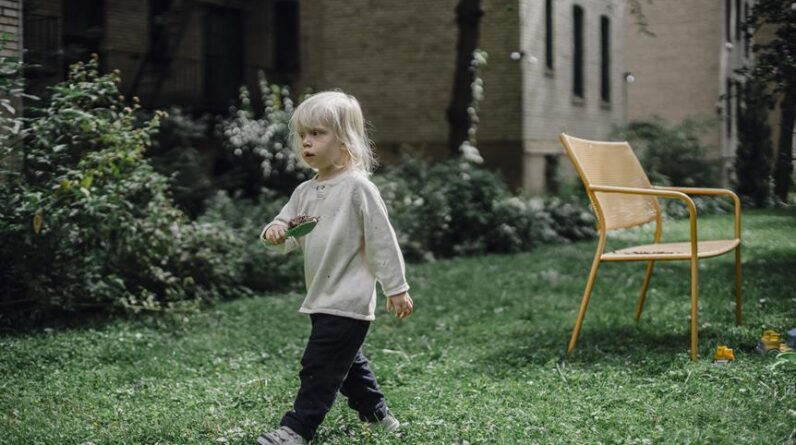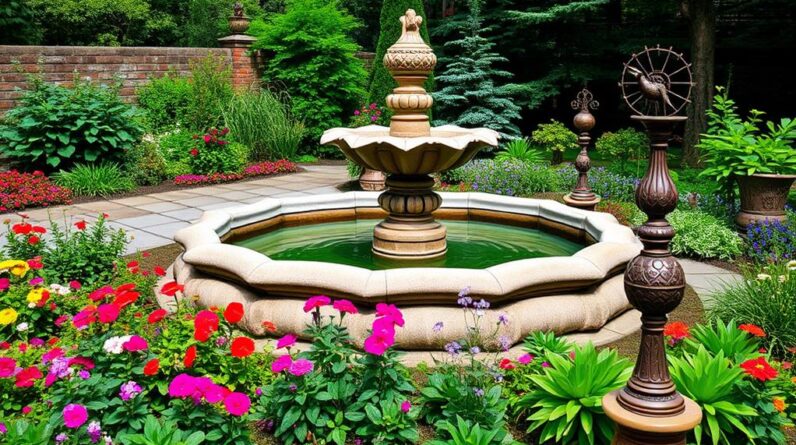
Are you ready to transform your garden into a whimsical wonderland for your little ones? Look no further! In this article, we'll guide you through the art of designing a kid-friendly garden that will ignite their imagination and keep them entertained for hours.
From choosing the perfect play structures to incorporating interactive elements and ensuring safety measures, we'll show you how to create a playful paradise where innovation and fun collide.
Get ready to embark on a journey of creativity and endless joy!
Key Takeaways
- Age appropriateness of play structures is important
- Incorporate elements that stimulate imagination
- Customization allows for a unique play space
- Use plants and activities that engage the senses
Choosing the Right Play Structures
You should consider purchasing a swing set for your kid-friendly garden.
When it comes to choosing the right play structures, customization is key. Gone are the days of cookie-cutter designs; now you have the opportunity to create a truly unique play space for your children. Think about their age appropriateness and their interests. Will they enjoy climbing walls or a mini rock-climbing structure? Maybe a slide and a mini trampoline would be perfect for their energy levels. Don't forget to incorporate elements that stimulate their imagination, like a playhouse or a sandpit.
By customizing structures and considering age appropriateness, you can ensure that your kid-friendly garden becomes an innovative and exciting space for your children to explore.
Now, let's move on to creating a sensory garden that will engage all their senses.
Creating a Sensory Garden
Immerse your children in a world of sensory delights by designing a garden that stimulates their senses. A sensory garden is a perfect way to engage their curiosity and encourage exploration. By incorporating sensory plants and engaging activities, you can create an outdoor space that captivates their imagination and provides endless opportunities for learning and play.
In a sensory garden, the choice of plants is crucial. Select a variety of plants that appeal to different senses. Fragrant flowers like lavender and rosemary will stimulate the sense of smell, while plants with interesting textures like lamb's ear and moss will engage the sense of touch. Vibrant flowers such as sunflowers and marigolds will catch their eye and enhance their visual experience.
To further enhance the sensory experience, incorporate engaging activities into the garden. Install wind chimes that create soothing sounds with the breeze, or set up a water feature where children can explore the calming effects of running water. Create a nature-inspired art corner where they can paint with natural materials like leaves and twigs.
Incorporating Interactive Elements
Get your children actively involved in the garden by incorporating interactive elements that encourage their participation and engagement.
One way to do this is by adding interactive water features. Install a small waterfall or a fountain that your kids can play in. They can splash around, cool off, and have fun while learning about the movement of water.
Another idea is to create DIY outdoor games. Build a giant tic-tac-toe board using large rocks or paint one on the ground using eco-friendly paint. You can also set up a scavenger hunt with hidden treasures or create a mini-golf course using recycled materials.
These interactive elements won't only entertain your children but also stimulate their creativity and imagination, making your garden a playful paradise.
Designing a Child-Friendly Layout
Create a garden layout that's tailored to meet the needs and interests of your children, ensuring they've a space where they can freely explore and play.
Here are some innovative ideas to consider when designing a child-friendly garden layout:
- Accessible pathways: Include wide, flat pathways that are suitable for strollers and wheelchairs, making it easy for children of all abilities to navigate the garden.
- Imaginative play areas: Incorporate designated spaces for imaginative play, such as a playhouse, sandpit, or treehouse. These areas can spark creativity and provide endless hours of fun.
- Interactive planting beds: Create raised planting beds at a height that's accessible for children, allowing them to get involved in gardening. This not only teaches them about nature but also gives them a sense of ownership over their garden.
- Multi-functional seating: Install benches or picnic tables that can double as storage for toys or gardening tools. This maximizes space and encourages outdoor gathering and socializing.
Designing a child-friendly layout with these accessibility features and opportunities for imaginative play will transform your garden into a playful paradise for your children.
Enhancing Safety and Security Measures
To ensure the safety and security of your children while they play in the garden, it's important to implement effective measures such as proper fencing and regular maintenance.
Safety guidelines should be followed to create a secure environment for your little ones. Start by installing a sturdy fence around the garden area to keep children from wandering off and to prevent unwanted intruders from entering. Make sure the fence is tall enough to discourage climbing and has a self-closing gate for added security.
Regular maintenance is crucial to ensure that the garden remains a safe space. Inspect the play equipment regularly for any signs of wear or damage and repair or replace as needed.
Additionally, parental supervision is essential to ensure that children are playing safely and following the established safety guidelines.
Frequently Asked Questions
How Do I Choose the Best Play Structure for My Child's Age and Interests?
To choose the best play structure for your child's age and interests, consider their developmental stage and preferences. Look for durable materials like wood or metal that can withstand rough play. Get creative and think outside the box for unique options!
What Are Some Ideas for Incorporating Sensory Elements Into the Garden Design?
You can create a sensory garden design by incorporating elements like textured plants, wind chimes, and a water feature. The benefits of sensory elements in a kid-friendly garden include stimulating their senses and promoting creativity and relaxation.
Are There Any Interactive Elements That Can Be Easily Added to a Garden to Engage Children?
You can easily engage children in the garden with interactive elements. Outdoor games like hopscotch or giant chessboards can be added, along with DIY projects like a fairy garden or a birdhouse.
How Can I Design a Layout That Encourages Active Play and Exploration for Children?
To design a garden that promotes imaginative play and creativity, incorporate natural elements for a more immersive play experience. Create a layout that encourages active play and exploration by adding interactive features like a treehouse, stepping stones, and a sensory garden. Enjoy the endless possibilities of a playful paradise.
What Safety and Security Measures Should I Consider When Designing a Kid-Friendly Garden?
When designing a kid-friendly garden, safety measures and security considerations are crucial. Ensure fences are secure and gates have child-proof locks. Consider soft landing surfaces, such as rubber mulch, to prevent injuries.
Conclusion
So, whether you're a parent or a landscape designer, creating a kid-friendly garden is all about imagination, creativity, and fun.
Did you know that spending time in nature has been proven to improve children's mental health and well-being?
By incorporating play structures, sensory elements, interactive features, and a child-friendly layout, you can design a playful paradise that will captivate and engage young imaginations for hours on end.
So go ahead, let your creativity run wild and create a garden that will bring joy and excitement to every child who explores it.







